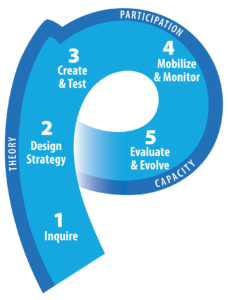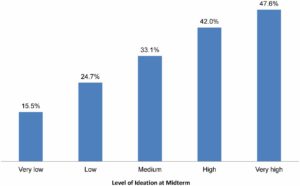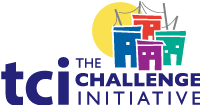TCI Global Toolkit: Demand Generation
Social and Behavior Change Overview- Home
- Help and Support
- Close
- Toolkits
- Global Toolkit
- AYSRH Toolkit
- Hub Toolkits
- Core High-Impact Practices
- Gender Essentials Mini Course
- Close
- Resource Collection
- Community of Practice
- Coaching
- Log In/Register
- My Profile
- English
What Is It?
Why is it important to take a scientific approach to behavior change related to demand generation? Start with a proven planning tool such as the P Process to develop a communication strategy to drive demand generation.

Click the image above to access a training on the P Process from Johns Hopkins Center for Communication Programs.
One of the most respected tools used in designing social and behavior change communication programs, the P Process is a step-by-step roadmap that can guide you from a loosely defined concept about changing behavior to a strategic and participatory program that is grounded in theory and has measurable impact. The P Process has five steps:
- Step 1: Inquire
- Step 2: Design your strategy
- Step 3: Create and test
- Step 4: Mobilize and monitor
- Step 5: Evaluate and evolve
Increasing evidence suggests that demand generation interventions based on social and behavioral science theories are more effective than those without a theoretical base, especially when multiple theories and concepts are considered.
A strong theory can help design, implement and evaluate effective programs by providing an understanding of the influencing factors on behavior, the way in which behavior change occurs and potential entry points for behavior change interventions.
Ideation is one of the theories and frameworks most often used in social and behavior change programming. Ideation refers to how new ways of thinking (or new behaviors) are diffused through a community by means of communication and social interaction among individuals and groups.
The ideation concept hold that people’s actions are influenced strongly by their beliefs, ideas, and feelings (“ideational factors”) and that changing them can change behavior, including contraceptive behavior. Some of these ideational factors are personal, such as what a person knows about family planning and how they think it will affect them. Others reflect social norms, such as what people believe other people will think of them if they use family planning. The more positive ideational factors a person holds, the greater the likelihood the person will adopt the desired behavior.

What Is the Evidence?
The Nigerian Urban Reproductive Health Initiative (NURHI) successfully used the ideation model in its efforts to increase the use of modern contraception among the urban poor in six Nigerian cities.
Ideation scores calculated at baseline and mid-term showed that among women with more exposure to the NURHI campaign, ideation scores were 13% higher than among women with zero exposure. Women exposed to the NURHI program were more likely to have higher ideational factors, and women with higher ideational factors were more likely to use contraceptives. These cognitive, emotional and social factors that influence contraceptive use included perceptions of social norms about family planning; knowledge, attitudes, and beliefs about family planning; and self-efficacy for using contraception.

Contraceptive Prevalence at Midterm Among Married Women Who Were Not Using a Modern Method at Baseline, by Level of Ideation at Midterm, N = 1,992. Significance of differences across groups: P < .001. Learn more
To understand the dynamics of these determinants in Nigeria, TCI implements periodic population-based surveys augmented with qualitative data and service statistics. Data from multiple rounds of the population-based survey shows that as positive ideational factors (i.e., psychosocial factors that predict behavior) increase, contraceptive use also increases. A review of key ideational results in TCI-supported states showed that women who can confidently recommend use of family planning and can discuss family planning with their spouse are two times more likely to use contraceptives, and perceived self-efficacy increases the odds by 62%. People with adequate knowledge of the various contraceptive methods are four times more likely to use family planning. Similarly, the rejection of myths increased the odds by 68%, while social approval increased the odds by 65%. Using these findings, TCI supports states to develop SBC program activities that address the various ideational factors that are most relevant to a particular state. This is reflected in the messages developed to engage with religious and community leaders, media practitioners and service providers.
 Recent trainings and engagement with The Challenge Initiative is enhancing my mobilization skills as how I engage with my community members has improved. The manner I and my community volunteers approach our potential clients has changed because our capacity has been developed. I am now able to do things differently as I now know a lot of things I did not know in the past. I now have IPC (interpersonal communication) skills which I use in engaging with community members. The SBC approach also helps me understand why people behave in a certain way and how to address those concerns in other to change their behavior. I now target my messages to address the ideational factors that are common to people in my LGA. I can interact with community members and provide comprehensive information better now than in the past because of my improved IPC skills. Even the IEC material is helping to comb myths and misconception which is one of the ideational factors limiting my community members from accessing FP services thus improving their knowledge on FP. I also refer people to PHC for service uptake using the referral card while I document and track my progress. This is helping know which PHC to support every month as I now have data I can refer to.”
Recent trainings and engagement with The Challenge Initiative is enhancing my mobilization skills as how I engage with my community members has improved. The manner I and my community volunteers approach our potential clients has changed because our capacity has been developed. I am now able to do things differently as I now know a lot of things I did not know in the past. I now have IPC (interpersonal communication) skills which I use in engaging with community members. The SBC approach also helps me understand why people behave in a certain way and how to address those concerns in other to change their behavior. I now target my messages to address the ideational factors that are common to people in my LGA. I can interact with community members and provide comprehensive information better now than in the past because of my improved IPC skills. Even the IEC material is helping to comb myths and misconception which is one of the ideational factors limiting my community members from accessing FP services thus improving their knowledge on FP. I also refer people to PHC for service uptake using the referral card while I document and track my progress. This is helping know which PHC to support every month as I now have data I can refer to.”
— Health Educator, Plateau State primary health care board stationed at Jos South LG
Across geographies, TCI coaches local governments how to effectively design and implement SBC approaches. The table below provides a number of examples of the various SBC approaches being implemented across TCI-supported geographies.
SBC Channel |
Example of SBC Approach Implemented in TCI Geographies |
| Interpersonal communication | Household visits and counseling by ASHA in India, House Visits in Francophone West Africa, Community Health Workers/Village Health Teams in East Africa, and social mobilizers in Nigeria |
| Community-level approaches |
|
| Mass media |
|
| New media | FP awareness-raising campaigns that leverage social media channels are prevalent across the geographies, especially as a result of meaningfully engaging adolescents and youth in AYSRH programming. Learn more about proven SBC approaches for engaging adolescents and youth. |
TCI APP USERS PLEASE NOTE
You will only receive CERTIFICATES by email – when earning a score above 80% – and will not be able to view or print a certificate PDF from the TCI app.
Test Your Knowledge
Earn a Certificate
Quiz Summary
0 of 5 Questions completed
Questions:
Information
You have already completed the quiz before. Hence you can not start it again.
Quiz is loading…
You must sign in or sign up to start the quiz.
You must first complete the following:
Results
Results
0 of 5 Questions answered correctly
Your time:
Time has elapsed
You have reached 0 of 0 point(s), (0)
Earned Point(s): 0 of 0, (0)
0 Essay(s) Pending (Possible Point(s): 0)
Categories
- Not categorized 0%
- 1
- 2
- 3
- 4
- 5
- Current
- Review
- Answered
- Correct
- Incorrect
-
Question 1 of 5
1. Question
Increasing evidence suggests that demand generation interventions based on social and behavioral science theories are more effective than those without a theoretical base, especially when multiple theories and concepts are considered.
-
Question 2 of 5
2. Question
The ideation concept holds that people’s actions are influenced strongly by their beliefs, ideas, and feelings and that changing them can change behavior, including contraceptive behavior.
-
Question 3 of 5
3. Question
The Nigerian Urban Reproductive Health Initiative identified a number of specific ideas and feelings that predicted whether a woman would or would not use contraception. The more of these predictors the woman had, the more likely she was to use family planning. These positive predictors included:
-
Question 4 of 5
4. Question
How do you intend to use the information reviewed and/or tools that you accessed?
-
This response will be awarded full points automatically, but it can be reviewed and adjusted after submission.
-
-
Question 5 of 5
5. Question
How useful did you find the information and/or tools presented on this page? Please write your response in the box below using one of the following phrases: Very useful, Useful, Somewhat useful, Not useful.
Feel free to comment on why you made that choice.
-
This response will be awarded full points automatically, but it can be reviewed and adjusted after submission.
-
Demand Generation Approaches
COVID-19 and Family Planning/Reproductive Health
The Challenge Initiative is working to provide additional resources and tools to help those working in family planning and reproductive health respond to the COVID-19 pandemic. LEARN MORE



